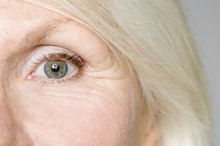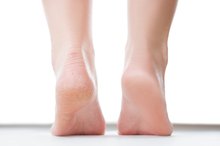What does fact checked mean?
At Healthfully, we strive to deliver objective content that is accurate and up-to-date. Our team periodically reviews articles in order to ensure content quality. The sources cited below consist of evidence from peer-reviewed journals, prominent medical organizations, academic associations, and government data.
The information contained on this site is for informational purposes only, and should not be used as a substitute for the advice of a professional health care provider. Please check with the appropriate physician regarding health questions and concerns. Although we strive to deliver accurate and up-to-date information, no guarantee to that effect is made.
What Vitamins are Good for Thin Skin?
There are several reasons our skin can become thinner. Often it’s simply a matter of the normal aging process at work. As we get older, our skin naturally loses some of the fatty layers that serve to protect blood vessels from damage. If you’ve spent too much time in the sun, collagen production in your skin dissipates and its elastin fibers lose their resiliency. The result is thinner skin 1. There are some vitamins that may help to rebuild the thickness of your skin 2.
Vitamin C
Moisturizers, cleansers and toners that contain Vitamin C may not only improve the texture of your skin but can help perk up its elasticity 3.
Vitamin C stimulates skin
What Are the Benefits of Retinol Cream?
Learn More
Vitamin C also encourages the formation of collagen formation 3. This antioxidant may stimulate the renewal of cells and boost circulation.
Ester-C
Ester-C (ascorbyl palmitate) is a calcium ascorbate form of Vitamin C that may encourage collagen production and add thickness to the skin 3. Your body may be better able to absorb Ester-C than regular Vitamin C 3.
Vitamin A
The Best Vitamin for Sagging Facial Skin
Learn More
Topical Vitamin A may help build collagen and improve the overall appearance and quality of the skin 3.
Retin-A, a by-product of Vitamin A
Retin-A is a derivative of Vitamin A This prescription-only treatment helps expedite the turnover of dead skin cells by improving blood supply to the skin 3. It may help improve the skin's thickness.
Vitamin E
A growing number of skin-care companies are adding Vitamin E to moisturizers, creams and lotions because of its anti-aging benefits 3.
Vitamin E is known to attack free radicals and therefore improve the quality of skin 3.
Vitamin E can help thicken skin because it lessens transepidermal water loss from the skin and builds up its protective barrier 23.
Although Vitamin E is available in many products, its benefits can also be derived from topical application of a Vitamin E supplement 3. The skin easily absorbs Vitamin E 3.
- A growing number of skin-care companies are adding Vitamin E to moisturizers, creams and lotions because of its anti-aging benefits 3.
- Vitamin E is known to attack free radicals and therefore improve the quality of skin 3.
Vitamin D
Vitamin D is another powerful antioxidant, and it can help prevent premature aging by protecting the skin's structure and thickness 3.
Sunlight is a great source of Vitamin D but of course it must be absorbed in modest amounts to avoid sun damage to the skin 3.
Related Articles
References
Writer Bio
Karen Hellesvig-Gaskell is a broadcast journalist who began writing professionally in 1980. Her writing focuses on parenting and health, and has appeared in “Spirituality & Health Magazine" and “Essential Wellness.” Hellesvig-Gaskell has worked with autistic children at the Fraser School in Minneapolis and as a child care assistant for toddlers and preschoolers at the International School of Minnesota, Eden Prairie.









